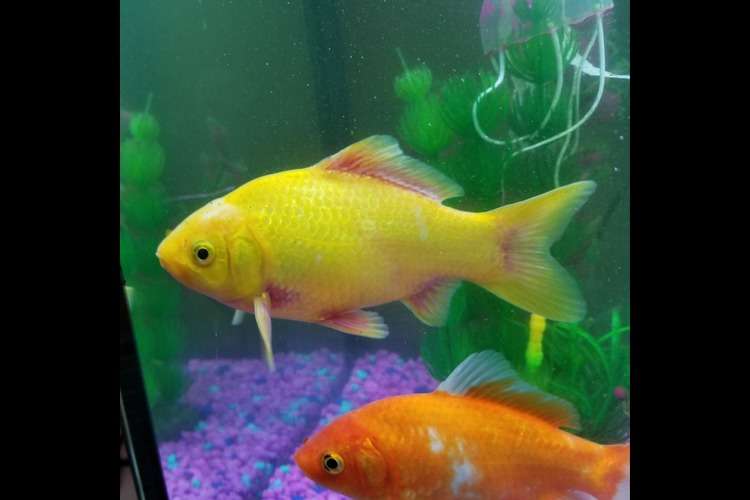How Carbon Dioxide Enhances Plant Growth in Your Aquarium
Discover how carbon dioxide boosts plant growth in your aquarium by promoting photosynthesis and root development. Learn about CO2 injection systems for optimal health.
Table of Contents
- CO2 in Photosynthesis
- CO2 Makes Plants Grow Faster and Healthier
- CO2 injection systems for the aquarium
- Benefits of CO2 for Plant Growth in Aquariums
- Monitoring CO2 Levels
- Faq
- Conclusion
Aquatic plants require a balanced environment, where they can gain access to the required nutrients and gases. Of these gases, carbon dioxide is the foremost gas in the process of plant growth. By understanding how carbon dioxide influences aquatic plants, aquarists can learn to maintain lush and healthy aquascapes. This blog will address its importance in enhancing plant growth in an aquarium.
CO2 in Photosynthesis
Like terrestrial plants, aquatic plants rely on photosynthesis to create food. Photosynthesis is the process by which a plant absorbs carbon dioxide from water, using sunlight to convert such substance into sugars needed for energy. The following equation describes photosynthesis in plants:
6CO₂ + 6H₂O + light energy → C₆H₁₂O₆ + 6O₂
In an aquarium, CO2 is useful in supplying carbon atoms for the production of these sugars, which, in turn, satisfy the plant's energy needs. Thus, if this process does not occur well, stunted growth will ensue and the plants will die.
CO2 Makes Plants Grow Faster and Healthier
CO2 in aquatic plants is highly sensitive. In large water bodies, there is usually enough CO2; however, in closed systems like aquariums, availability is usually less, especially if there's a high lighting level or fast-growing plants in a tank. Adding extra CO2 creates greater availability which leads to increased plant growth and bright colors.
As a result of constant and optimal CO2 supply, lush green underwater gardens are created, where plants outgrow algae for space and light. These are healthy plants that absorb excess nutrients like nitrates and phosphates that might lead to algae blooms, thereby also assisting in maintaining water quality.
CO2 injection systems for the aquarium
Aquarium hobbyists use CO2 injection systems to supply sufficient doses of CO2 to their plants. These systems release controlled amounts of CO2 into the tank via a diffuser that disperses the gas evenly through the water column. There are several different types of CO2 injection systems:
Pressurized CO2 system: This system makes use of pressurized tanks of CO2, with a regulator attached, to gauge the amount of CO2 being released into the aquarium.
DIY CO2 systems: This system is easier to set up; simple fermentation techniques are used to culture carbon dioxide that generally generates a less steady supply of carbon dioxide.
Regardless of the means employed, a CO2 concentration between 20-30 ppm is necessary for the optimal growth of plants. Fish will die if CO2 is overdosed on, which inhibits plant health if an insufficient amount is administered.
Benefits of CO2 for Plant Growth in Aquariums
CO2 injections bestow quite several benefits to the aquatic plants. Some of them include:
Rapid Growth of Plants: The elevated levels of CO2 enhance the efficiency of plant photosynthesis, so the survival rates are accelerated.
Improve Root Development: Well-fed with CO2, plant roots develop stronger systems anchored to their substrate; they take up nutrients better.
Brighter Colors: With good CO2, plants have rich colors, especially of red and purple pigments.
Increased Overall Health: Healthier plants have an elevated carbon supply, thus increased immunity against diseases and biotic attacks.
Monitoring CO2 Levels
Proper monitoring of CO2 is essential to ensure that plants are benefiting from the gas without negatively affecting fish or invertebrates in the tank. Excessive CO2 can lead to depletion of oxygen, which can stress or harm aquatic life.
Upon tracking CO2 concentration, you can use:
Drop Checkers: These are small devices containing a pH-sensitive liquid, changing color in accordance with the level of CO2.
pH Meters: Since CO2 acts to lower pH levels in water, a sudden drop in pH would be a good indicator of excess CO2.
Faq
1.Why is CO2 important for aquatic plants?
CO2 supports photosynthesis, helping plants grow and produce energy.
2.How does CO2 affect plant growth?
CO2 promotes faster, healthier plant growth and vibrant colors while preventing algae.
3.What is a CO2 injection system?
It supplies controlled CO2 to plants using pressurized tanks or DIY methods.
4.What are the types of CO2 injection systems?
Pressurized CO2 system (using tanks) and DIY CO2 system (using fermentation).
5.What is the ideal CO2 concentration?
20-30 ppm is optimal for plant growth.
6.What are the benefits of CO2 for plants?
CO2 promotes rapid growth, healthier roots, better colors, and overall plant health.
7.How can I monitor CO2 levels?
Use drop checkers or pH meters to monitor CO2 concentration.
8.What happens if CO2 levels are too high?
Excess CO2 can harm fish by depleting oxygen levels.
9.How can I balance CO2 for plants and fish?
Keep CO2 levels between 20-30 ppm and monitor regularly.
10.Can CO2 prevent algae growth?
Yes, CO2 helps plants outcompete algae, preventing blooms.
Conclusion
Carbon dioxide is a vital nutrient to aquatic flora because of its role in the tips of photosynthesis and also during the general health of the plant. The addition of CO2 to the aquarium assures healthy plant growth and promotes the bright colors of the flourishing aquatic plants. It is very essential to properly monitor CO2 in order to maintain good conditions for both plants and aquatic animals in the aquarium. Approximately, proper CO2 management will create an aquarium that is really awesome and good to live in with aquatic plants and animals.

















